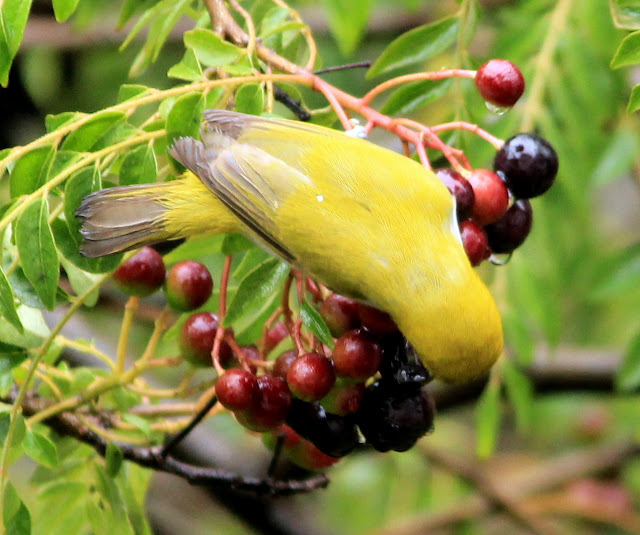 |
Credit: NASA/JPL-Caltech/Space Science Institute |
October 15th 1997, The Lord of the Rings- Saturn-had a friend coming. The rocket blasted off from the Earth carrying the Cassini orbiter and the Huygens probe. Saturn would have to wait for 7 long years until the duo reached. After a couple of fly-by to Venus, an Earth-Moon fly-by, cruising through the asteroid belt, the spacecraft reached Jupiter, in December 2000.
It started it's journey towards Saturn, exploring and clicking along the way. It watched the rings, the massive Saturnian storms and discovered tiny moons too.
In June 2004, it had its first Moon fly-by, it was the satellite Phoebe. Cassini passed within 2000 kilometers of this dark moon. It was revealed that Phoebe is a primordial object from the early outer solar system that was captured by Saturn in its orbit. Finally in July 2004, Cassini became the first spacecraft inserted successfully in Saturn's orbit. It had it's first encounter with the huge Moon Titan. It was here, the Huygens probe woke up from its hibernation and was detached to explore Titan.
Huygens created history. It became the first, and till date, the only landing on any world in the outer solar system! Such exquisite details of Titan were revealed along with its geology which expanded our horizons vastly.
And there, Cassini continued..
A year later, it had it's fly-by past Enceladus. 'A Big Surprise at a Small Moon' is what the scientists at JPL called it. The detailed imagery obtained showed a youthful yet complex terrain, free of impact craters, with unique tectonic features. Cassini detected a huge water vapour cloud and ice particles over its South polar region. This was surely exciting times for scientific community worldwide.
March 2006, a revolutionary discovery was made. Cassini scientists announced evidence of liquid water reservoirs feeding the Enceladus plume (possibly in form of geysers?). During a close fly-by in 2008, Cassini's instruments sampled the plume directly, and found "a surprising brew of volatile gases, water vapour, carbon dioxide, carbon monoxide, as well as organic materials, some 20 times denser than expected! The 'tiger stripes' fractures near the south pole, and many such interesting and stunning data was gathered. There would probably be a separate mission to Enceladus to further explore.It had a close fly-by getting just 25 kilometres above its surface! Enceladus is active, in a very unique way.
 |
| Enceladus. Credit: NASA/JPL-Caltech/Space Science Institute |
New rings of Saturn; Iapetus' odd dichotomy of surface; new moons; observing the moons Titan, Mimas, Rhea, Dione closely; finding evidence for a large scale saltwater reservoir beneath the icy crust of Enceladus; capturing Saturnian storms; the Saturn north pole hexagon, and many more discoveries and observations added to Cassini's extraordinary achievements.
It continued its journey as the mission was extended. In July 2014, scientists using the data identified atleast 101 distinct geysers on Enceladus.
Cassini has given us so much precious and breathtaking data about Saturn and its family, inspiring a new league of scientists.
Well, good things come to an end. Cassini mission will begin a Grand finale on April 22nd 2017, of passing daringly with 22 loops, passing through Saturn and its innermost ring. This will be historic in itself, as it will explore a entirely new region around Saturn and come closer then ever before! With each passing day, going closer, it will make a final plunge in Saturn's atmosphere, in September 2017, be crushed and vaporized in the process. It would be a little less than 20 year old spacecraft, with a mission more than successfully accomplished. Cassini is definitely going in style.
https://saturn.jpl.nasa.gov/mission/grand-finale/overview/
An artist would be as delighted as a Scientist seeing the Cassini data. The rings so spectacular, Saturn so surreal. Each image in itself is a story.
I am totally Love struck, Awe struck!
Cassini you will continue to inspire.
https://saturn.jpl.nasa.gov/galleries/images/
https://saturn.jpl.nasa.gov/galleries/hall-of-fame/
**(All data, facts, statistics from JPL/NASA)
































